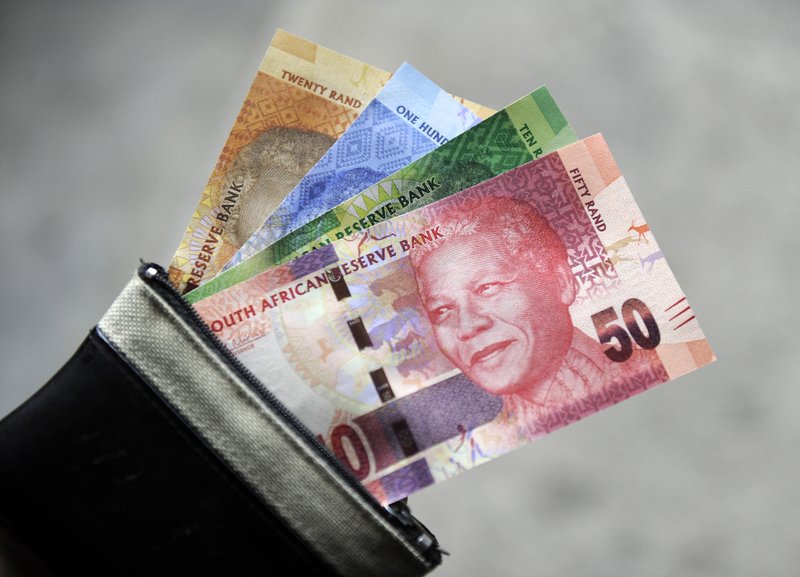Drought, policy missteps plunge SA economy into distress: World Bank
Updated | By ANA
Internal factors, including the drought and “growing policy uncertainty”, were choking South Africa’s economic growth, according to the latest South Africa Economic Update from the World Bank.

“External headwinds are only part of the story and they don’t tell the whole story. There is a longstanding list of domestic constraints that we have discussed in previous updates,” World Bank programme leader and co-author of the report, Catriona Purfield, told journalists in Pretoria on Tuesday.
“Over the last couple of months we have seen domestic constraints and headwinds come to the fore.”
“When there is policy uncertainty, it has massive ramifications on financial markets,” Purfield said, adding that a graph in the report showed some of the impact of the abrupt changes at the helm of the finance ministry in December that “shocked both the country and the investor community”.
Late last year, the rand plunged after President Jacob Zuma fired Nhlanhla Nene as finance minister, replacing him with the little-known Des van Rooyen. The rand recovered some of its losses after Zuma back-tracked amid pressure and re-appointed seasoned Pravin Gordhan to the critical portfolio.
“Now there is uncertainty about South Africa’s foreign currency bond rating … all eyes are on this year’s Budget to see if the country will deliver on its commitment to fiscal stability and sustainability while preserving growth,” Purfield added.
She said the drought, attributed to the global climatic phenomenon El Nino and the worst in decades, had hit South Africa’s agricultural sector below the belt. Quarter on quarter, agriculture contracted at double digit rates through the first three quarters of 2015. She said the drought would have an adverse impact on poverty in South Africa.
“Overall, there is an increase in poverty. It [the drought] is happening in rural and agricultural communities that are already very poor and in provinces like Mpumalanga already suffering from job losses.”
The report said global growth remained subdued in 2015 as major emerging markets weakened. Commodity prices have continued their slide with global commodity markets over-supplied and demand softening. By the end of 2015, the Bank’s three industrial commodity indices – energy, metals and minerals, and agricultural raw materials – were down an average 55 percent from their respective peaks in 2011.
“As a country, South Africa struggles with its fifth consecutive year of slowing growth. Incomes are falling, unemployment is rising, as is dissatisfaction with the pace in addressing the longstanding problems of poverty and inequality.
“In this edition of the economic outlook, we look at our economic forecast for 2016 and 2017 which, in many ways, are shaping out to be one of the most difficult periods for South Africa since the late 1990s,” said Purfield.
“As it was in the late 1990s, South Africa today faces an external environment where a strong US dollar, combined now with slowdown of growth in China, is creating immense difficulties for emerging markets and commodity producers.
“Against this background, we see that domestic constraints, including South Africa’s own high fiscal deficit and debt and rising inflation pressures are limiting the scale for the country to counter these external headwinds.”
She said that even though global growth was expected to pick up in 2016, it would likely fall short of expectations.
Based on current projections, the World Bank report said South Africa’s economy would have to grow by an average of 7,2 percent a year from 2018 onwards if the National Development Plan target of more than doubling 2011 gross domestic product by 2030 was to be realised.
Purfield said a look at South Africa’s turbulent mining sector showed that between the third quarter of 2011 and mid-2015 143,000 jobs had been shed in the sector.
“As a result of these external and domestic headwinds, we have had to look at the growth forecast again. What we have done over the last months is to revise our forecast for growth for 2016 down to 0.8 percent,” she said.
She asked what that would mean for the average South African and answered that it meant that for every year between 2014 and 2017 the income of the average South African would have fallen … “every single year for four years”. - ANA
(File photo: Gallo Images)
Show's Stories
-
Kids vs parents: Who has the best taste in music?
Breakfast with Martin Bester is getting parents and kids to go head-to-h...
Breakfast with Martin Bester 11 minutes ago -
Most expensive province for car license renewals
Here are the average vehicle license renewal fees per province.
Breakfast with Martin Bester 26 minutes ago